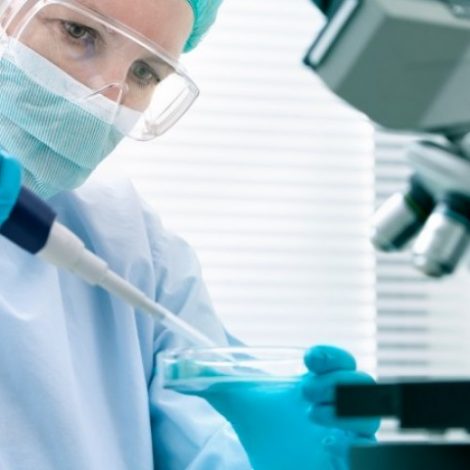Differences in Key Proteins in DMD Muscle Cells Favor Fat Formation, Study Says

An imbalance in cells producing proteins called aldehyde dehydrogenases (ALDHs) — favoring fat formation in tissue — is evident in the muscles of people with Duchenne muscular dystrophy (DMD), a study reports.
A better understanding of these cells could open new avenues of treatment, its researchers said.
The study, “Aldehyde dehydrogenases contribute to skeletal muscle homeostasis in healthy, aging, and Duchenne muscular dystrophy patients,” was published in the Journal of Cachexia, Sarcopenia and Muscle.
ALDHs are a family of proteins that play numerous roles in development and in the normal functioning of various cell types. In particular, many of these proteins are important for the removal of toxic compounds.
Previous research showed that cells with ALDH activity are present in muscle tissue. In addition, these cells can be broadly divided into two categories based on the presence of other cellular markers: myogenic, meaning they contribute to the formation of muscle tissue, and adipogenic, meaning they help form fat tissue.
Therapeutic manipulation of cells with myogenic properties has been proposed as a way of helping people with disorders like DMD. However, little is known about how this cell population changes over time, or its role in disease.
Researchers in France first assessed how age and aging might affect the proportion of ALDH-producing cell populations. To this end, they analyzed muscle biopsies from 52 people, between the ages of 28 and 93, without muscle-affecting conditions undergoing hip replacement surgery.
No significant differences in the number of ALDH-expressing cells were seen comparing groups of individuals of different ages. Among ALDH-expressing cells, ratios of myogenic and adipogenic cells also did not differ significantly based on age.
Researchers then looked at cells with ALDH in muscle biopsies from nine people with Duchenne undergoing spine surgery (ages 13 to 16), and five people with scoliosis unrelated to any known muscle condition who served as controls.
The overall number of ALDH-expressing cells was significantly greater among DMD patients. Specifically, an increase was found in the number of adipogenic (fat forming) cells, while myogenic (muscle-tissue forming) cells were similar between the two groups.
A similar analysis was done in a dog model of DMD. Again, the overall number of ALDH-expressing cells was increased compared to controls — but unlike results from the human biopsies, myogenic cells were significantly increased, while adipogenic cell numbers were comparable.
According to the researchers, biopsies from dogs were taken fairly early on in life, while biopsies from humans were taken during surgery that was necessary because of disease progression. As such, this difference “may represent two phases of the disease,” they wrote, suggesting that, at the point of biopsy in patients, “muscle regeneration has been exhausted by the cycles of the disease and a fatty fibrotic tissue is replacing the healthy one.”
In both patients and dogs in a model of DMD, the number of myogenic cells was also not significantly lower compared to controls.
“This observation may be important in view of the future use of this population in therapeutic perspective,” the scientists wrote.
Detailed analyses of the specific ALDHs and other cellular markers expressed by individual cells, and how the expression of these proteins were associated with different muscle-creating capabilities were also performed.
Collectively, data suggested that ALDHs play important roles in the maintenance of muscle tissue, and that differences in specific components of the ALDH family may help in developing “new promising candidates for regenerative therapy approaches,” the researchers added.






